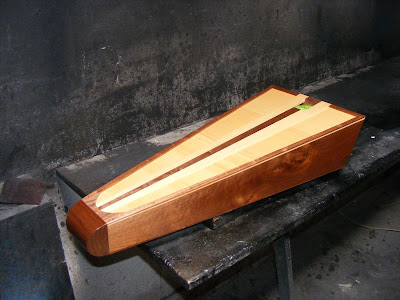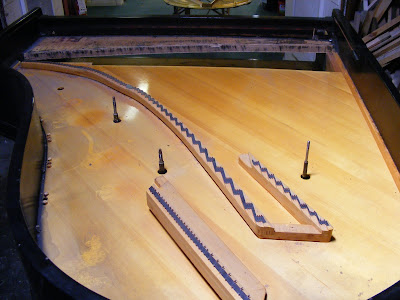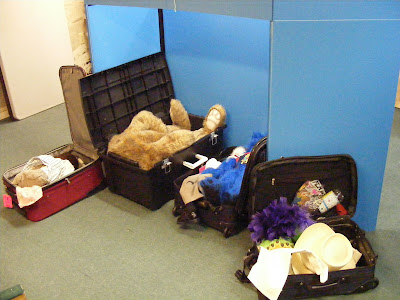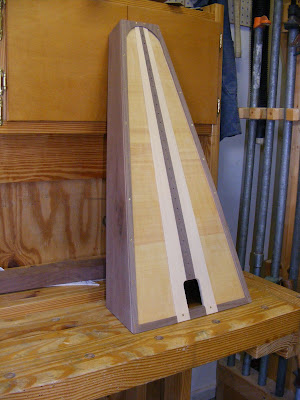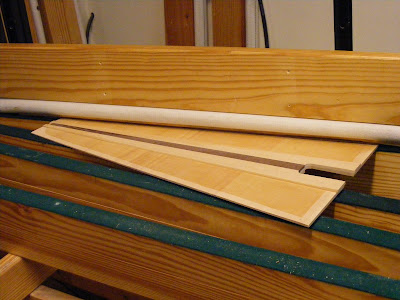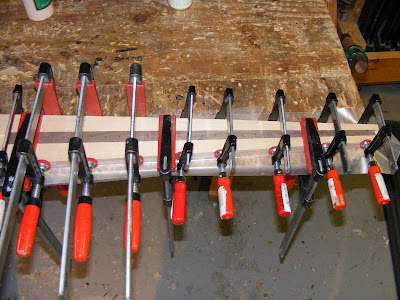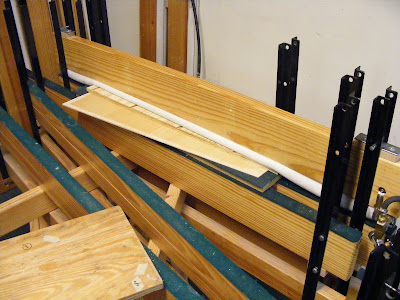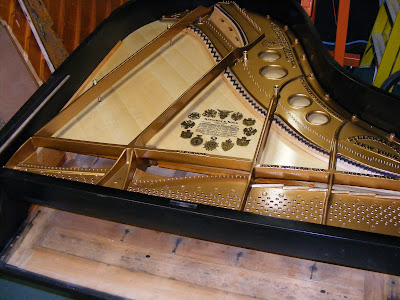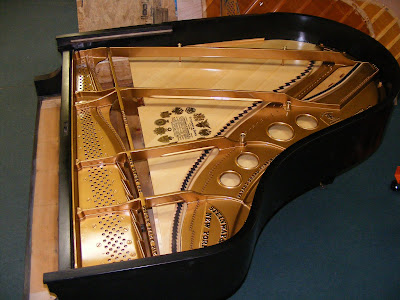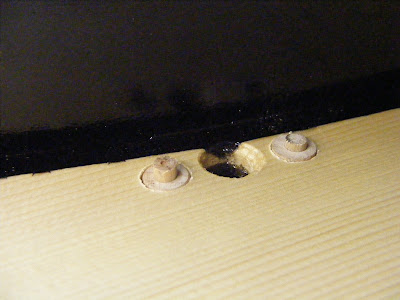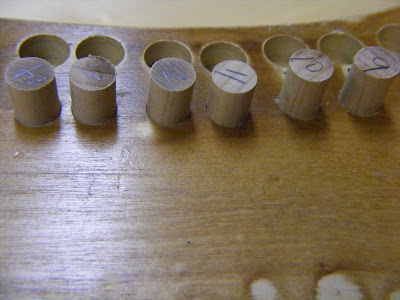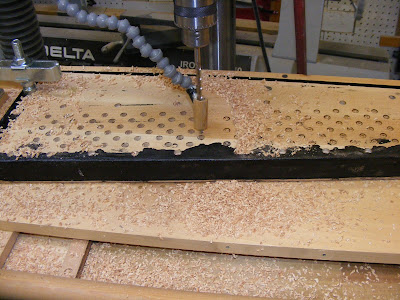



After the soundboard is "broken" out of the piano, the rim must be cleaned to remove glue and soundboard residue. The first job is to remove as much of the spruce wood fiber as possible without damaging or nicking the rim. This is done with a very sharp chisel. Next, the old glue residue must be removed. This is done by soaking the rim with a solution of wall paper remover and water. The rim is wet down several times and left to soak for about 30 minutes. As the glue softens, it can be scraped off the hard maple rim fairly easily, but care must still be taken not to gouge the rim. Finally the rim is wiped with a soft cloth to soak up any lingering water and loose reside. If per chance the previous sound board installer did not use a water soluble glue, that task is much more difficult, requiring the use of abrasives. In this case, the soundboard was installed about 25 years ago in an unknown rebuilder's shop. It appears that they used a white glue, which does soften when soaked in water. The ideal glue for gluing the soundboard to the rim is hide glue, because it is very easy to remove when soaked in water, but is extremely hard when dry.



